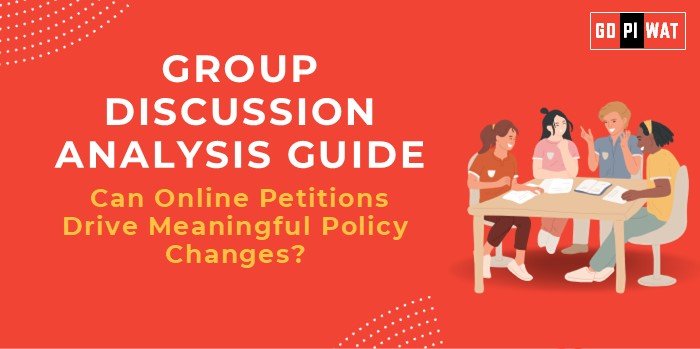📋 Can Online Petitions Drive Meaningful Policy Changes?
🌐 Introduction to the Topic
Online petitions have emerged as a transformative tool in the digital age, enabling grassroots activism and empowering citizens to voice their concerns. Platforms such as Change.org and Avaaz have provided spaces for individuals to advocate for social, environmental, and political reforms, as seen in cases like the net neutrality petition in India, which garnered over 1 million signatures and influenced regulatory policies.
📊 Quick Facts and Key Statistics
- Global Success Rate: Only ~3% of online petitions directly result in policy changes (Civic Influence Report, 2023).
- India’s Internet Users: Over 900 million, reflecting significant potential for digital activism.
- Youth Engagement: 65% of petitions are initiated by individuals aged 18-35, showcasing the role of youth in advocacy.
- High-Impact Example: The “Justice for George Floyd” petition (2020) spurred law enforcement reforms across the US.
🏛️ Stakeholders and Their Roles
- Government: Reviews, debates, and implements policies influenced by petitions.
- Platform Providers: Facilitate petition creation and ensure widespread dissemination.
- Citizens: Use petitions to voice concerns and mobilize public support.
- Media: Amplifies petitions, shaping public opinion and influencing political agendas.
- Civil Society Organizations: Convert petitions into actionable campaigns and policies.
🏆 Achievements
- Awareness Generation: Movements like MeToo highlighted workplace harassment, prompting global policy changes.
- Catalyst for Debate: The Indian net neutrality petition forced public discussions on telecom regulations.
- Policy Impact: Petitions supporting LGBTQ+ rights contributed to same-sex marriage recognition in Taiwan.
⚠️ Challenges
- Low Conversion Rates: Only a small percentage of petitions influence legislation.
- Echo Chambers: Circulation within like-minded communities can limit broader impact.
- Regulatory Barriers: Lack of formal lobbying often weakens petitions’ effectiveness.
🌍 Global Comparisons
- United Kingdom: Parliamentary petitions with over 100,000 signatures often lead to debates in the House of Commons.
- United States: The “We the People” platform has historically influenced discussions on healthcare and other key policies.
- India: Change.org campaigns have seen success in raising awareness but face challenges in influencing legislative action.
📄 Structured Arguments for Discussion
- Supporting Stance: “Online petitions democratize activism, enabling marginalized voices to reach global audiences.”
- Opposing Stance: “The lack of formal enforcement mechanisms often limits petitions’ real-world impact.”
- Balanced Perspective: “While online petitions amplify public concerns, integration with lobbying and grassroots efforts is necessary for sustained impact.”
💡 Effective Discussion Approaches
- Statistics-Based Opening: “Globally, $1 trillion in productivity is lost annually due to unaddressed mental health issues—a key area petitions often target.”
- Case Study: “The net neutrality petition in India highlighted how digital platforms can influence policy frameworks.”
- Counter-Arguments: Acknowledge low success rates and propose strategies like government collaboration and stronger petition reviews.
📈 Strategic Analysis of Strengths and Weaknesses
- Strengths: Cost-effective, accessible, and fosters civic participation.
- Weaknesses: Limited enforceability and risk of misinformation.
- Opportunities: Integration with legal frameworks and grassroots activism.
- Threats: Disregard by governments, especially in non-democratic regimes.
🏫 Connecting with B-School Applications
- Real-World Applications: Explore petitions in CSR strategies or as case studies in digital marketing and advocacy.
- Sample Interview Questions:
- “What role do online petitions play in corporate decision-making?”
- “How can technology amplify civic engagement through petitions?”
- Insights: Use petitions to understand digital influence on policy and societal change.


